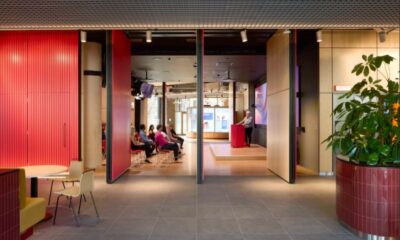Tech
5 Digital Marketing Best Practices for Modern Businesses

Have you ever wondered why, during a game, coaches are always speaking with their players? The players are talented people who have practiced and are proficient in their craft. Coaches, however, witness the whole scene. Their overall strategy is to provide direction, insightful analysis, and modifications to support their teams’ success.
In the internet sphere, that is essentially what a digital marketing strategy does for your brand. You might not be able to leave your local league without one.
Let’s discuss the top five digital strategies for modern firms to achieve this.
- Marketing Automation
Manual marketing procedures have been a problem in the B2B sector for years, undermining professionalism, trust, and ability to affect clients’ bottom lines.
Brands can achieve all of the aforementioned goals and optimize their workflow to increase lead and revenue production by implementing marketing automation.
The main advantages are:
- Data segmentation to enhance targeting. Treating every potential customer the same way is a terrible marketing mistake. Segmentation guarantees that you are delivering the appropriate message to them. For example, behavioral targeting makes use of behavioral data to identify advertisements and messaging that people would find compelling.
- Enhancing customer retention and engagement. Your team will have more time to build relationships with potential clients, find unexplored prospects, and meet client needs if you remove iterative activities. This encourages repeat business and loyalty.
- Make a quantifiable return on investment. Fortunately, marketing automation solutions have data tracking features to assist you in analyzing return on investment. Pulling data is a nightmare. They also give you information on your strategies, allowing you to decide what to keep and what to change or eliminate.
- Cold Calling
It takes skill to communicate with people on the phone, particularly when you’re trying to get new clients.
Being approachable and using proper phone manners improves your ability to connect with your audience, communicates professionalism, and could lead to a follow-up call or meeting.
Best practices include:
- Take thorough notes. To better grasp the contact person and their company’s urgent needs and preferences, make notes during your interactions with the prospect, even the oddball details. You can use these notes to make more personalized follow-ups and assess how the chat went.
- Avoid speakerphones. There was a film called Wolf of Wall Street. You don’t want to put your prospect on speaker in real life. If they don’t hang up, they will probably hear an echo and your words may sound less clear, which will lower the quality of your talk.
- Aim for personal discussions. It’s difficult when you have 50 or 100 calls to make, but if you’re hurrying, the prospect will notice and start to doubt your intentions. Be considerate of their time while you take the time to build a relationship.
- Make your script better. Although there are no perfect scripts, there are several methods to make yours better. Make sure your pitch demonstrates the value you provide, ask insightful questions, and review the words or phrases that excite or put off the audience.
- Host Virtual Events
When the COVID-19 pandemic made it impossible for in-person events to happen, the majority of us embraced virtual events.
However, these events have spurred new approaches to reaching large and new audiences today.
You can boost brand awareness, increase event attendance, and boost income with careful planning.
Think about the following:
- Select a platform. Examine the platform’s features regarding breakout sessions, attendee capacity, and additional networking and interaction options. Does user visibility exist on the platform? Finding peers, influencers, and other people with whom they want to interact is a great benefit for attendees.
- Pick your speakers wisely. Either they may attract large crowds and hold their attention throughout the event, or they can fail miserably. Think about speakers who are popular with and followed on social media by your target audience. This might be a great chance for audiences to interact with professionals whose viewpoints they respect.
- Advertise your event. You must actively market the event even if your speakers will probably advertise it on their platforms. Use social media advertisements, include a landing page on your website, and refer to it in email newsletters and on your social media accounts.
- Case studies
Businesses are under a lot of pressure to demonstrate that their products are worthwhile because marketing copy, promotional offers, and catalogs are only so effective.
To demonstrate that your solutions are effectively assisting organizations in achieving their goals, you will need further evidence.
Gaining new clients is the aim, but a strong case study also informs readers about how a specific company resolves an issue that many others experience.
The following factors should be taken into account when creating a case study:
- Describe how you worked on the study. Use the opportunity to describe your philosophy, approach, and methods of working with customers as you record their stories.
- Add visuals. In addition to improving case study illustrations, infographics, diagrams, videos, and pictures will also serve as visual aids in otherwise wordy narratives.
- Uses facts and figures. Include numbers and facts based on statistics to support the project’s success. In addition to enjoying a fantastic story, people will be seeking quantitative data to determine viability.
- Email Marketing
This veteran digital marketer continues to produce significant results for its clients. According to studies, people who automate their email marketing strategy can increase their revenue by up to 320%.
Yes, here are some tips to help you make the most of this strategy for your business.
- Create a customer profile. Internal buying committees are used by many businesses to manage procurement. These could include the C-Suite, managers, finance, initiators, and end users. They have varied priorities, including ROI, usability, functionality, and necessity. You can gain a deeper understanding of these groups’ requirements and preferences by developing buyer personas for each of them.
- Segment audiences. After creating customer profiles, imagine implementing email campaigns on a large scale and customizing each one to fit the needs of various people in each company. Terrible, huh? Make lists of the many personas using your email marketing platform so you may tailor your emails to each one’s interests.
- Proceed in stages. Organize your email campaign to reflect the customer’s journey from awareness to contemplation to decision-making. It will assist in making sure the information offered is appropriate for the stage of the buyer’s journey.
-

 Business4 weeks ago
Business4 weeks agoHow to fill MSME Form 1? Step-by-Step Guide
-
Business4 weeks ago
From Marine to Chief: The Leadership Journey of Sean Mannix
-

 Gadget4 weeks ago
Gadget4 weeks agoAfter Grand Success on BLDC Ceiling Fan, Eff4 Is Launching Smart Bulb
-

 Festivals & Events4 weeks ago
Festivals & Events4 weeks agoGoogle Celebrates Cherry Blossom Season with Animated Doodle
-

 Business2 weeks ago
Business2 weeks agoPrakash and Kamal Hinduja: Driving Social and Environmental Change
-
Education3 weeks ago
Fred DuVal: University Leadership as a Critical Resource for Climate Change Research and Life-Saving Solutions
-

 Sports4 weeks ago
Sports4 weeks ago2025 NASCAR Craftsman Truck Series Baptist Health 200 at Homestead-Miami Speedway: Race Preview, Prediction, Schedule, Entry List, Drivers to Watch and How to Watch
-

 Health2 weeks ago
Health2 weeks agoThe Hinduja Brothers Commitment to Global Health: Empowering Communities Across Borders

























